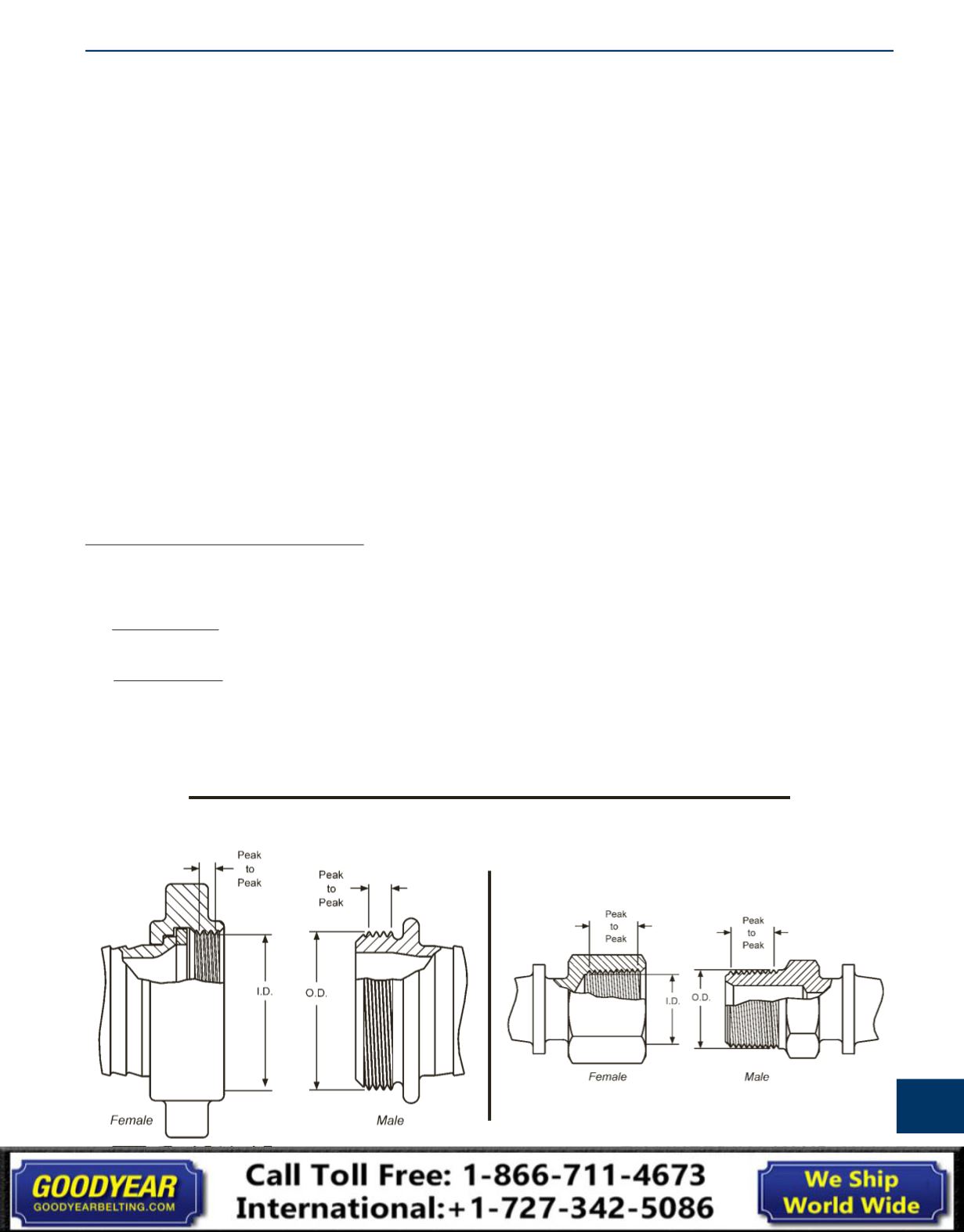

Safety &
Technical
P
939
DPL418
877.963.4966 •
dixonvalve.comP
Identifying Threads
It is important to identify the threads required before ordering couplings.
Identifying threads can sometimes be the most difficult and frustrating part of coupling selection. However, without the right
combination of threads, you may not provide a functional or safe connection.
The diameters, threads per inch (TPI) and thread pitch, etc. are necessary to completely identify a thread. Ring, plug and
GO/NOGO gauges are required to accurately gauge or identify threads. In the field, in the absence of these gauges, thread
leaf gauges can be used to identify the Threads Per Inch (TPI) and the thread pitch. On threads you have determined to be
straight threads, a caliper can be used to measure the Outside Diameter of the male (ODM) or the Inside Diameter of the female
(IDF). A caliper can also be used to take measurements of tapered thread diameters. However, these are more difficult to
define because of the taper. Fortunately, there are few tapered threads to deal with and these can usually be identified from the
nominal ODM and the TPI.
However, identifying the thread may not fully identify what is needed in a mating fitting. The application is the primary
limiting
factor on the thread type used.
Dixon
®
offers products with a wide variety of threads used with hose, pipe and hydraulics.
When attempting to choose a fitting, it is always advisable to first identify the thread to which it must connect. This may entail
checking with a fitting or equipment manufacturer.
The fire hose thread specifications for some local municipal fire equipment and hydrants may vary according to local
specifications. These can generally be most easily identified by contacting the local fire department responsible for the hydrant.
The most common thread used on fire equipment is National Standard Thread (NST), also known as National Hose thread
(NH).
When it is not possible to identify the thread:
1. Determine the number of threads per inch by measuring the distance from peak of thread to peak of thread across the largest
number of whole threads. Then divide the number of threads by the measurement (this will provide the TPI).
2. Check to see if the thread is straight or tapered.
a)Straight Threads
Measure the Outside Diameter of the Male (ODM) or the Inside Diameter of the Female (IDF), from peak of thread to peak
of thread.
b)Tapered Threads
Measure the Outside Diameter of the Male (ODM) at the large end and the small end, or the Inside Diameter of the Female
(IDF) at the large end and the small end, from peak of thread to peak of thread. Then measure the Outside Diameter (OD)
of the unthreaded pipe.
Once the application and these two pieces of information have been determined, the thread can generally be determined. When
in doubt, call Dixon
®
at 800.355.1991.
Straight Thread
Tapered Thread
Thread Information


















